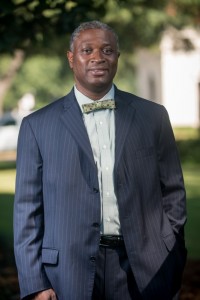Welcome to our website. This message is intended for our friends and partners both on and off campus. We hope you will visit the site often, for it is our most important communication tool in our dual role as UA’s leader in engaged scholarship and intercultural relations.
While the terms “scholarship of engagement” or “engaged scholarship” — the terms are interchangeable — has been around for years, they may not be familiar to everyone. First used by Ernest Boyer in a 1996 article published in the Journal of Higher Education Outreach and Engagement, Boyer sought nothing less than to redefine the role of higher education. He advocated a move away from scholarship as the “application of academic expertise” to a scholarship that creates partnerships between higher education and communities. He further argued that engaged scholarship integrates the often-conflicting faculty roles of teaching, research and service, seeing them instead as different aspects of a common purpose. Since Boyer, engaged scholarship has come to mean collaboration between knowledge professionals on campuses and the lay public for mutual benefit.
While engaged scholarship is practiced in every UA department, the leadership and coordination of this work is the job of the Center for Community-Based Partnerships (www.ccbp.ua.edu), an initiative of the Division of Community Affairs.
The Division’s other major responsibility, explaining and championing the University’s commitment to cultural diversity, is carried out through a variety of programs such as the Realizing the Dream Concert and in the many activities sponsored by Crossroads Community Center (www. http://crossroads.ua.edu/)— also an initiative of Community Affairs — and co-hosted by dozens of on- and off-campus organizations.
At The University of Alabama the resulting benefits of these partnerships can be seen everyday, as lives are changed and education enriched in the process. Here are just a few of hundreds of UA’s engagement scholarship programs:
- Since 2004, FocusFirst in the Center for Ethics and Social Responsibility (www. http://cesr.ua.edu/) has provided free high-tech vision screenings to more than 175,000 preschool children in Alabama. And since 2007, SaveFirst has prepared tax returns for more than 17,500 low-income families, enabling them to claim $31 million in refunds and save $4.8 million in tax preparation fees.
- The Parent Leadership Academy (PLA) (http://pla.ua.edu/) combines the resources of several UA academic units with the energy and wisdom of Tuscaloosa parents to improve local public schools while increasing parental involvement in their children’s education. Some 200 parents, who in turn have involved hundreds of others, have received training to become parent leaders in the seven years of the program.
- Engineers Without Borders (http://ewb.ua.edu/) have made water safe to drink at home and abroad while adding to the practical skills of hundreds of civil, construction and environmental engineering students over the past 10 years.
- The Alabama Entrepreneurial Research Network (http://aern.cba.ua.edu/) have planted seeds of University expertise in rural Alabama counties through workshops and online access to best business practices for almost 15 years.
- UA scientists and engineers and their students are bringing science, technology, engineering and mathematics (STEM) education to schools in rural Sumter County. Grants totaling almost $3 millions have been awarded for this purpose.
- More than 10,000 copies of the Journal of Community Engagement and Scholarship, published by Community Affairs in cooperation with the Engagement Scholarship Consortium (http://engagementscholarship.org/) have been read by thousands of scholars and citizens throughout the United States and foreign countries since its inception in 2008, with many more exposed to the best in engaged scholarship through the journal’s website, www.jces.ua.edu.
- Saving Lives (http://ccbp.ua.edu/saving-lives/) works with faith-based organizations to improve health and wellness by providing the information to alter lifestyles through exercise, diet and religious practices.
And this is just the beginning. New partnerships are continually being formed. We hope this brief introduction to a new and exciting field of teaching and research has awakened an interest in you and that you will get in touch with one of our talented associates to discuss a possible partnership. A possible way to start your engagement exploration is as a member of our CCBP Council (http://ccbp.ua.edu/about/council/). Send me an email at communityaffars@ua.edu or give me a call at 205-348-8376 and let’s start a conversation.
Currently, our two centers — the Center for Community-Based Partnerships, and Crossroads Community Center — engage several thousand people in various communities, and our impact is increasing daily. Our vision is to be a nationally recognized leader in university-community partnerships, outreach and engaged scholarship. We understand that in partnership with communities, together, we bring the caliber of leadership necessary to solve complex and interconnected problems not only in the South but throughout the nation and world. To this end, our signature programs are designed with an intense focus on quality and sustainability. We are interested in the transference of resources and leadership from within the walls of academe into the classrooms, church halls and businesses of the community. We understand that partnership development is a process — one that requires mutual and reciprocal respect and trust. This is the nucleus of our work and is a process toward an end characterized by the mobilization of vast resources — financial, human and intellectual — to help transform historically marginalized communities into communities that inform, educate and engage and which are empowered for continued success in a 21st century global community. A report of activities completed mostly during the 2010-2011 school term is ready for you to read — to learn more about what we have done and what we intend to do. We invite you to read this important publication and ask you to focus on our closing statement to join us in a conversation and action-oriented activity to engage communities and change lives, including your own.
